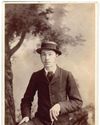
There is a place on our shores which hosts one of the world’s great nature spectacles, attracting birders and photographers from far and wide: the autumn gathering of red knot (knot). The Wash, a vast tidal bay separating Norfolk from Lincolnshire and bordering the North Sea, attracts over 100,000 of these wading birds, a species that nests in the Arctic. Many use our coasts and estuaries to feed in winter but in autumn freshly arrived from the far north, they gather to take advantage of rich feeding grounds that the mudflats offer.
The spectacle occurs on Spring Tides which have nothing to do with spring, but occur when the sun, Earth and moon are aligned forming a strong gravitational pull creating the highest tides. When these occur the mud and large parts of the salt marsh are inundated, pushing the knot and other waders – notably oystercatchers – to roost on gravel pits on the Norfolk side of the Wash at Snettisham. This RSPB reserve has a long foreshore overlooking the estuary from where you can watch the spectacle unfold. As the tide covers the mud, huge numbers of birds are pushed ever closer to the edge until eventually vast flocks take to the air and descend on to their roosting banks and islands on the gravel pit. Here the knot form rivers of birds moving restlessly as they surge in tightly packed groups, before eventually settling down until the tide starts to fall. Once mud is exposed, they leave in groups to resume feeding out on the Wash.
KIT LIST
Tripod If you wish to experiment using slow shutter speeds to create pleasing blurs of the knot at roost, when some parts of the flock surge and other birds remain stationary, then a tripod becomes essential for the slow shutter speeds required.
هذه القصة مأخوذة من طبعة July 11, 2023 من Amateur Photographer.
ابدأ النسخة التجريبية المجانية من Magzter GOLD لمدة 7 أيام للوصول إلى آلاف القصص المتميزة المنسقة وأكثر من 9,000 مجلة وصحيفة.
بالفعل مشترك ? تسجيل الدخول
هذه القصة مأخوذة من طبعة July 11, 2023 من Amateur Photographer.
ابدأ النسخة التجريبية المجانية من Magzter GOLD لمدة 7 أيام للوصول إلى آلاف القصص المتميزة المنسقة وأكثر من 9,000 مجلة وصحيفة.
بالفعل مشترك? تسجيل الدخول

Calling The Shots: A Queer History of Photography
Offering an unprecedented view of photographic history through a queer lens, this is a wonderful and powerful book, says

Large-aperture standard zoom, too
SONY has also revealed a new premium standard zoom, the FE 28-70mm F2 GM.

Super-fast, high-res Sony Alpha Ai II
SONY has announced its new professional full-frame flagship camera, the Alpha A1 II.

39 awesome accessories
Our round-up of the best accessories we've used and reviewed this year, along with some old favourites. There's something here for every budget, starting from just £7, including tripods, bags, filters and much more

Such a thing as society
This autumn sees the launch of a major new book and exhibition devoted to examining the multiplicities of photography during 1980s Britain. Peter Dench finds out more

Join Club
The sociable Canvey Island Photographic Club is keen to grow its in-person meet ups

Capturing flight
Winners and finalists of Bird Photographer of the Year share their tips for success with Hollie Latham Hucker

140 years of change
AP has become the world’s oldest surviving consumer photo magazine because we have moved with the times, says Nigel Atherton

Preserving history in platinum
A deep dive into the meticulous art of platinum printing, and the collaboration between the Royal Geographical Society and Salto Ulbeek. Mike Crawford explores how they brought historical photographs to life with enduring beauty and precision

Life in the past lane
What was life like for an amateur photographer in 1884? John Wade takes a trip back in time